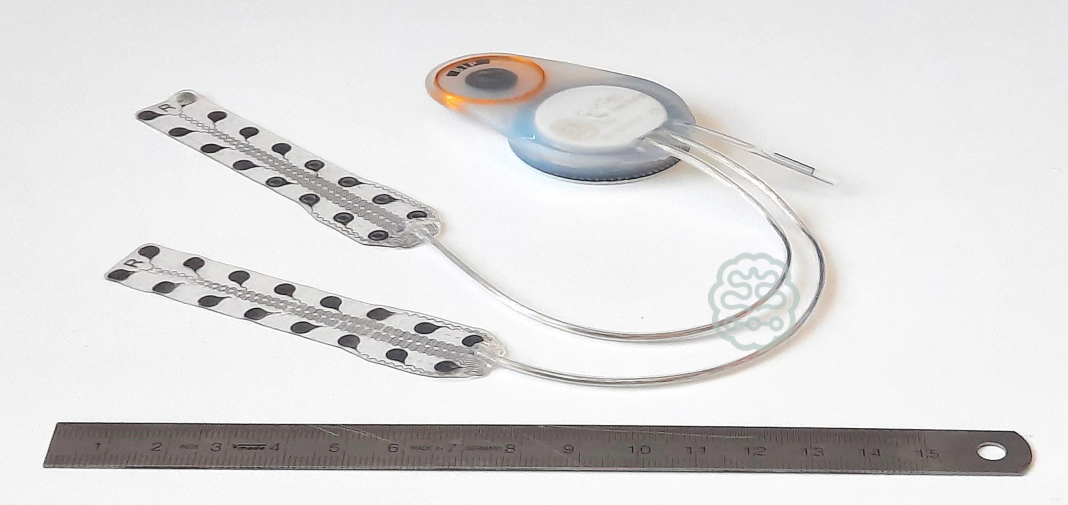Martin Schuettler, Chief Technology Officer of CorTec GmbH, walks us through a groundbreaking achievement in the development of future therapies for neurological conditions like stroke
To develop new treatments for neurological conditions, it is crucial to create suitable devices to support groundbreaking studies. Neuromodulation offers the possibility of treating brain network disorders at their root. Particular networks of brain cells are associated with various functions, e.g. cognitive or motoric capabilities.
Disruption of network functionality, caused by injury or disease, leads to impaired brain function, which then causes conditions such as motor disorders, e.g., Parkinson’s disease (PD), or mood/mental disorders, e.g., anxiety, schizophrenia, and depression. (1) With the Brain Interchange System, CorTec aims to provide clinicians with a fully implantable closed-loop Brain-Computer Interface (BCI) for the investigation of therapies.
To develop new treatments using implantable devices that serve as an alternative to drugs, researchers and clinicians rely on medical device manufacturers that offer safe and approved medical devices suitable and capable for their respective research. The U.S. Food and Drug Administration (FDA) recently approved an Investigational Device Exemption (IDE) application by the University of Washington School of Medicine (UW) involving the closed-loop Brain Interchange Implant System.
The first IDE study (2) involving the Brain Interchange Implant System will be conducted in collaboration with Principal Investigator Professor Jeffrey G. Ojemann from UW in Seattle as well as Prof. Steven C. Cramer from the University of California Los Angeles and their respective teams. With the U.S. National Institutes of Health (NIH) funding (3), the consortium seeks to obtain the initial first-in-human safety data and to develop and evaluate novel therapeutical rehabilitation approaches for upper limb impairment in stroke patients via direct cortical electrical stimulation delivered by the Brain Interchange System. (4)
Next steps to bring the Brain Interchange System into the first patient
The FDA approval marks the most critical milestone for the study. It demonstrates readiness to proceed to the next steps leading to patient implantation. These next steps involve the approval of the local University of Washington Institutional Review Board (IRB) to start the recruitment process for the study. The first implantation of the Brain Interchange System is scheduled for the third quarter of 2024.
In the latest press release from CorTec, announcing the FDA approval for the planned IDE study, Co-Investigator of the NIH-funded study and Engineering Lead of the Project, Assistant Professor Dr. Jeffrey Herron from UW explained that “In the United States, all studies involving devices which pose a significant risk require the approval by both the FDA and institutional review board prior to participant recruitment.
“The FDA review of Investigational Device Exemptions for significant risk device studies is a rigorous process involving the submission of extensive documentation by both UW, the research site, and CorTec, the device manufacturer. The FDA makes their determination for a specific study based on the details of the study protocol, an extensive hazard analysis, and an in-depth evaluation of the manufacturer’s documents pertaining to the design and testing of the device to ensure that it will perform as needed for the study.” (4)
How the closed-loop Brain Interchange System will shape the future of neuromodulation and brain-computer interfaces
Researchers currently use the Brain Interchange System worldwide as a therapy discovery platform. This includes the Brain Interchange Evaluation Kit and the implantable Brain Interchange System, which are electronically identical and offer closed-loop functionality. (1) Next to the stroke rehabilitation treatment using cortical stimulation to enhance plasticity within the brain described previously, other indications being investigated include epilepsy, movement disorders, depression and Parkinson’s Disease.
More projects are currently in preparation and will investigate new treatments for indications such as schizophrenia, post-traumatic stress disorder and speech recognition. It is also planned to use it as a brain- computer interface to permit heavily impaired patients to communicate again and to control assistive devices like a wheelchair. Many more applications can be thought of, and CorTec is constantly searching for experts in their field to collaborate with them in the future. (1)
With the clearance of the Brain Interchange System for human use, CorTec is prepared to serve clinicians and research groups with its advanced implant technology to investigate novel treatment options for neurological diseases. (4)
References
- Martin Schuettler (2023), “CorTec’s Brain InterchangeTM system: Revolutionizing brain therapy
with closed-loop neuromodulation”, Open Access Government July 2023, pp.164-165. Available at https://www.openaccessgovernment.org/article/cortecs-brain-interchange-system-revolutionizing-therapy-closed-loop-neuromodulation/162813/ - IDE Application reference G230003/A001
- NIH Project 1UH3NS121565-01A1: ”Motor Recovery through Plasticity-Inducing Cortical Stimulation”, in response to RFA-NS-18-023: https://reporter.nih.gov/search/-xvTvG85Ukm-KXyunAWaJw/project-details/10357993
- https://www.cortec-neuro.com/press-release-fda-approval-ide-efs-brain-interchange/

This work is licensed under Creative Commons Attribution-NonCommercial-NoDerivatives 4.0 International.


